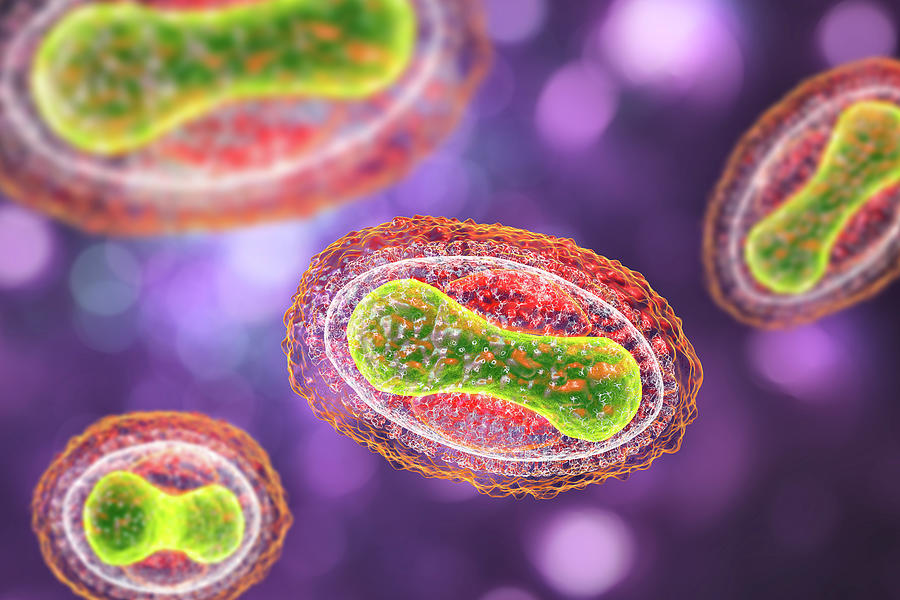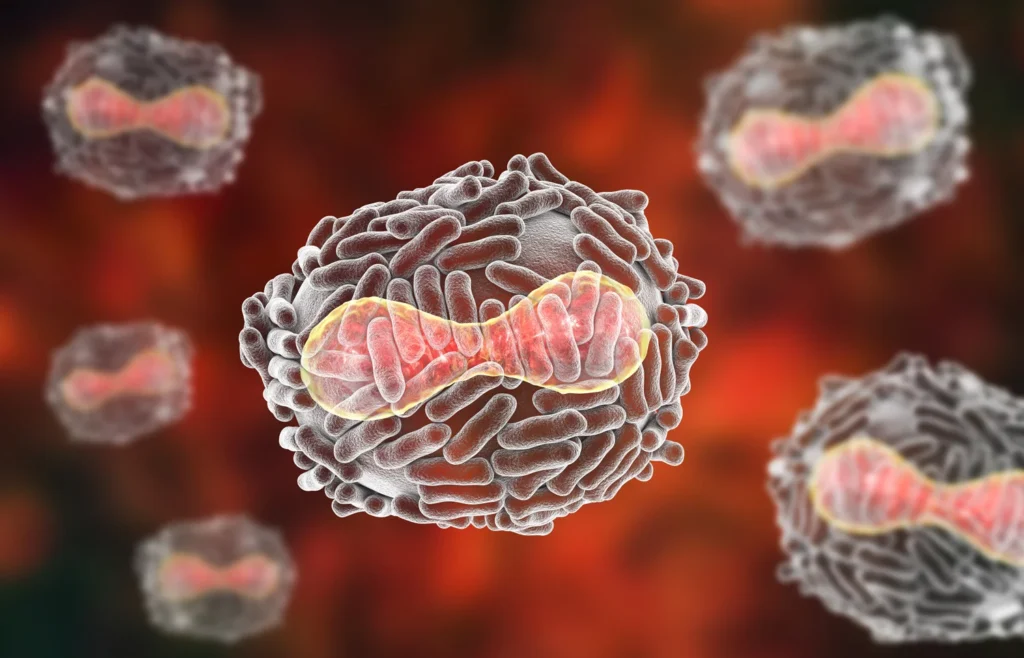Variola virus is one of the most dangerous pathogens in the history of mankind. It caused smallpox, a highly contagious disease that was accompanied by high mortality, severe complications and left deep scars on people's bodies.
Over the centuries, this infection has caused massive pandemics, changed the course of history, destroyed entire civilizations, and even affected the outcome of wars. However, in 1980, the World Health Organization (WHO) announced the complete eradication of smallpox as part of a Global Vaccination Program.
Today, Variola virus exists only in two officially authorized laboratories – in the United States and Russia. However, the issue of preserving or destroying these samples remains a matter of debate.
In this article, we will look in detail at the structure and biology of the virus, the history of its spread, the consequences of epidemics, infection mechanisms, control methods and prospects for biosecurity.

1. Classification and general characteristics
🔬 Scientific classification:
✔ The Kingdom: Viruses (Virus)
✔ Family: Poxviridae
✔ Subfamily: Chordopoxvirinae
✔ Gender: Orthopoxvirus
✔ View: Variola virus
Variola virus is a member of the genus Orthopoxviruswhich also includes the cowpox virus (Cowpox virus), monkeypox virus (Monkeypox virus) and the vaccine virus (Vaccinia virus).
This virus is unique in that it was completely eliminated in nature – the first and so far the only infectious disease that was eliminated thanks to vaccination.
2. morphology and structure of the virus
🔬 Features of Variola virus:
✔ Large size – about 300 × 250 nm) - one of the largest among viruses
✔ Has a complex oval or rectangular shape
✔ Double-stranded DNA as a genetic material
It is unique among viruses in that it replicates in the cytoplasm, not in the cell nucleus
✔ Surrounded by an external membrane that helps to enter the cells
The virus is very stable in the external environment, can remain viable on objects (for example, on clothes or bed linen), which contributed to the rapid spread of the disease.
3. Variola virus variants
There are two main strains of Variola virus:
🔹 Variola major - caused a classic, severe form of smallpox with a high mortality rate (20-40%)
🔹 Variola minor - a less dangerous form that caused milder symptoms and had a mortality rate of about 1%.%
Although Variola minor had a lower mortality rate, both strains left significant complications and scarring on patients ' skin.
4. pathways of virus transmission
Variola virus is an exclusively human pathogen-it does not infect animals. Main distribution mechanisms:
✔ Airborne pathway - when sneezing, coughing, talking
✔ Contact Path - through items contaminated with the virus (clothing, bed)
✔ Direct contact with patients - due to discharge from the affected skin
The virus's ability to transmit through air and surfaces has made it extremely dangerous, especially in crowded environments.

5. symptoms and clinical course of smallpox
⏳ Incubation period: 7-17 days
🛑 Main stages of the disease:
1. prodromal period (first symptoms) (2-4 days)
✔ High temperature (up to 40°C)
✔ Muscle aches, weakness
✔ Headache
✔ Nausea and vomiting
2. rash (day 4-5)
First, a red rash appears on the face, then on the limbs and torso
✔ After 2-3 days, the rash turns into purulent bubbles
✔ For 8-10 days, the bubbles dry out, leaving deep scars
🔴 3. complications
✔ Secondary bacterial infections
✔ Pneumonia (viral pneumonia)
✔ Blindness
✔ Facial deformity due to scarring
6. mortality and epidemics
⚰️ Mortality rate:
✔ Variola major – 20-40%
✔ Variola minor – 1%
📜 Major historical pandemics:
✔ XV-XVIII centuries - smallpox caused massive deadly epidemics in Europe and Asia
✔ Colonization of America (16th century) - smallpox wiped out up to 90% of the native American population
✔ 1721 (Boston epidemic) - first major epidemic in North America
✔ XX century - more than 300 million deaths
7. vaccination and elimination of smallpox
💉 Vaccine development:
✔ 1796 - Edward Jenner discovered a vaccine based on cowpox
✔ 1967 - WHO has launched a smallpox eradication program
✔ 1980 - WHO officially announced the complete eradication of the virus
This was one of the greatest medical achievements in history!
8. current threats: bioterrorism and virus persistence
☣️ Where is Variola virus currently stored?
✔ USA (CDC, Atlanta)
✔ Russia (Vector, Novosibirsk)
🌍 Why wasn't the virus completely destroyed?
✔ Research for biosecurity
✔ Possibility of creating vaccines in case of bioterrorist attacks
However, there are concerns that the virus may be used for military or terrorist purposes.
Conclusion
Variola virus is one of the worst pathogens in the history of mankind. Its elimination was a unique case of the victory of medicine over an infectious disease. But the threat of the virus returning remains, so research and vaccination are essential for global security.
